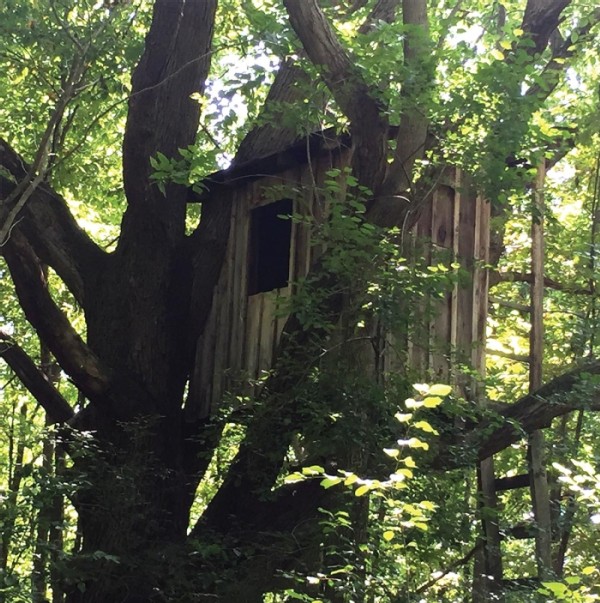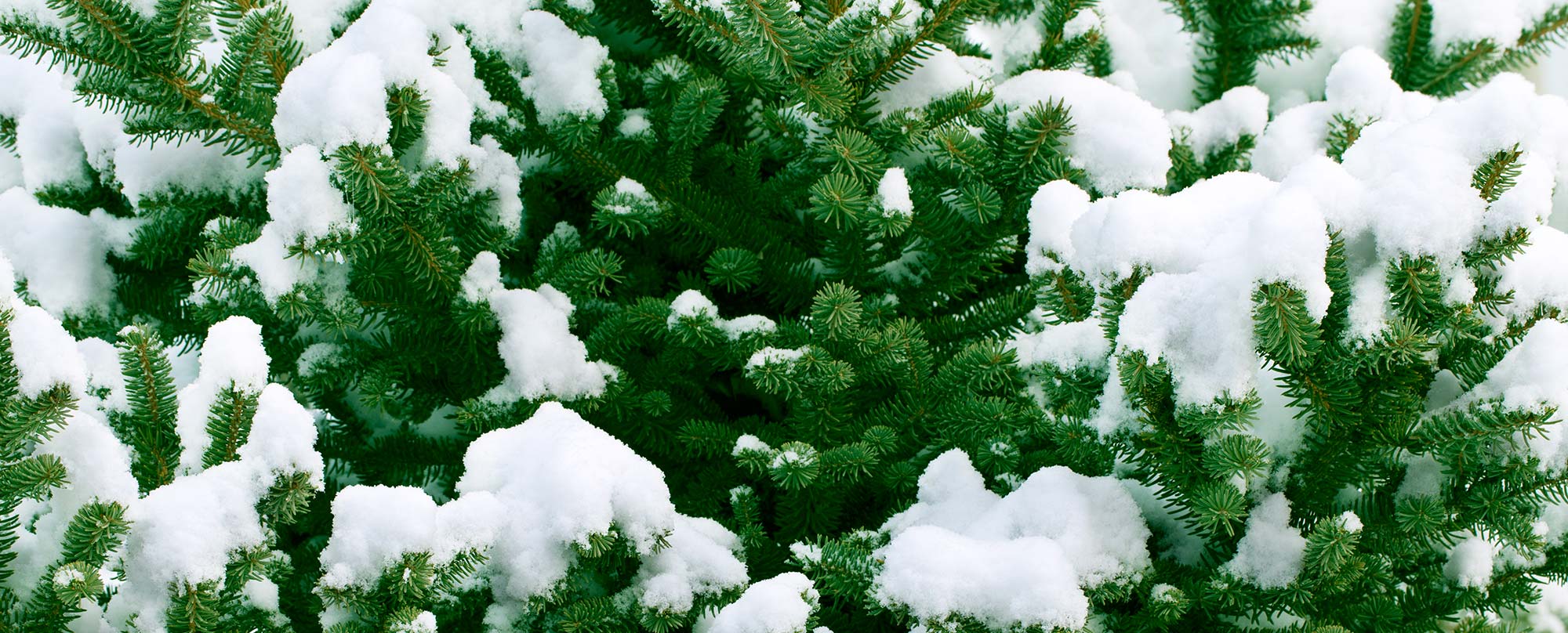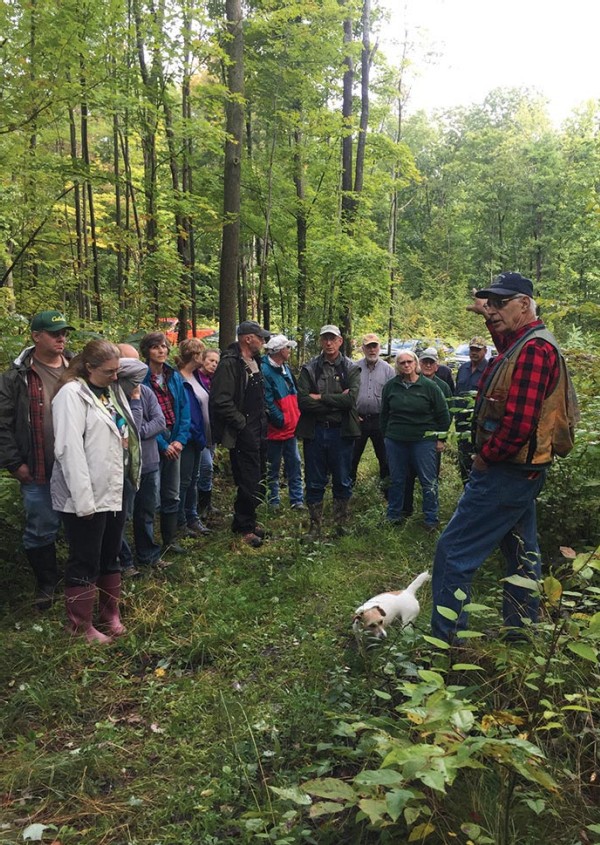
Often, I jest that my husband David and I bought our woodlot as a shared “midlife crisis.” But rather than a passing fancy, stewarding our forestland has truly become an integral part of our lives, changing them for the better. We now have a family treasure that we can enjoy in countless ways, including as a get-away location that forces us to give up all technology and to focus on the out-of-doors. Doing so has given us countless opportunities to experience and learn firsthand about forests, trees, and the rich life that surrounds them.
In 1997, with my husband’s very high-stress job and five kids, we were looking for a family oasis in which to retreat. Many weekends were spent looking at countless properties: lake houses, open agricultural, and some woodlots. We eventually purchased a piece of property that consisted of 400 forested acres in the Allegany Foothills of the Southern Tier of New York State. This remote property, which had been recently lumbered, was heaven we thought. And it was. Kids got muddy; we cooked over an open fire; we noticed trees. Lots and lots of trees. But we also began to question why did our forest look like a war zone? And why were there so few birds around? And was all the erosion we saw normal?
In our quest to learn more, we joined the New York Forest Owners Association (NYFOA), an organization that quickly became very meaningful to us. As members, we received immediate support by way of education, publications, events, and direct member-to-member support. We followed the advice of many seasoned members who so graciously and generously shared their guidance, mistakes, and their recommendations as to who to reach out to for success. And they asked us, “What are your forest goals?” We never even thought that we should consider the woods beyond just watching trees grow.
Thus began our boots-on-the-ground management as we juggled teenagers, jobs, and distance from our property. Because the forestland is in Amish Country, we had a wealth of local builders who helped us to construct a barn and our post- and-beam camp. With a base to work from, we began crafting a forest-management plan, which we did with the help of Paul Kretser, a senior forester for the NYS Department of Environmental Conservation in 1999. This is an imperative document written by either your local DEC representative or a consulting forester to delineate your property’s forest stands, elevation, streams, and all sorts of other features. During this process we learned that our property had been high-graded twice by the time we had bought it. Take the best, leave the rest. “Who does that?” we asked ourselves. Apparently, it is a pretty common practice.
We began to learn the various impacts that past management, and lack thereof, had on our forest- land. For example, more sun on the ground created a whole new set of opportunities for regeneration. But of what? What were the genetics of the seed source for future seedlings? Invasive species as well as thousands of saplings forking and twisting to dominate the canopy and hopefully outwit the deer browse is mostly what we observed. We needed help for the property, but how? Did we do damage by doing nothing in the woodlot when we first purchased the property? Once again, we got busy learning. We attended countless seminars, watched webinars, volunteered to serve on the board for the Invasive Species Advisory Council, received our Master Forest Owner Volunteer certification, took on active roles in our local NYFOA chapter, attended and hosted woods walks, wrote articles, attended a Master Naturalist Volunteer program, and acquired speakers for our general meetings, chainsaw safety classes, hunting license, and the list goes on.
Anwar Karim, our USDA representative from the Natural Resource Service Center in conjunc- tion with the New York State DEC representative, assisted us in Timber Stand Improvement (TSI). In 2013, we were privileged to hire Bruce Robinson as our private consulting forester. With his professional guidance, during the next three years we built an access road deep into our forest to give us the ability to fulfill our forest-management goals. Mr. Robinson is a man of great tenderness and appreciation of all that is ornithology, trees, and positivity. There is great value added to your goals when your professional has these innate qualities. Thanks to Bruce, we have steered our precious woodlot onto the right course for success. We removed thousands of the undesirable trees – the worst of the worst. We created vernal pools for the wildlife. We then constructed a landing for future timber sales, which has assisted us in continuing with proper forestry management and stewardship. After four years, we now see the benefits. We have abundant regeneration of northern hardwoods. By leaving the tops of the undesirable trees on the forest floor, this action has prompted regeneration of desirable tree species, as well as enhanced wildlife habitat. In addition, the decomposition of this woody material adds future nutrients to the soil. The bird population has exploded because of our management of the forest! Presently, we are donating firewood that we were unable to dispose of when the local low-grade timber market bottomed out.
I was never schooled in the sciences and I have a real respect and admiration for all those scientists and researchers who spend their lives examining how forest ecosystems work. The knowledge they share about forests from the most grandiose oak to the tiniest microbes that can only live in the uppermost branches of old-growth trees challenges us as forest landowners to do our very best to correctly steward our woodlots. Working with and in nature is truly the most humbling experience to humans. I am truly grateful to my forest for the person it has allowed me to become. Now we understand how our love of the woods will benefit our legacy for generations to come. As our forester continuously advises: look at the whole forest before you cut down that one stem.


